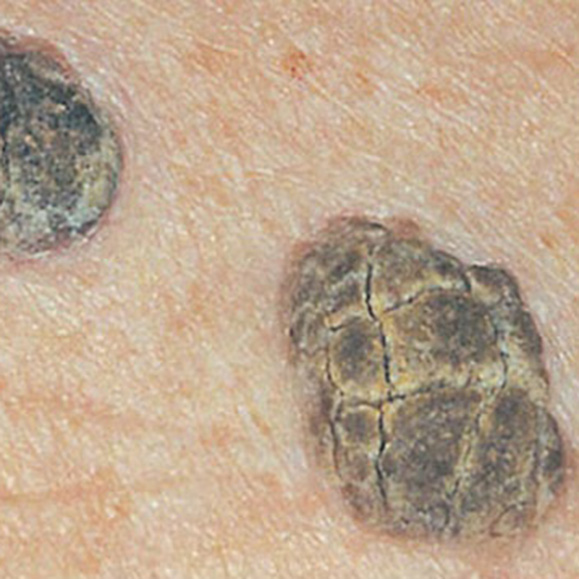Seborrheic Keratosis
Home • Dermatology • Common Skin Conditions • Seborrheic KeratosisAbout
Seborrheic keratosis is a common type of noncancerous skin growth that primarily affects middle-aged and older adults. These growths are usually brown, black, or light tan and have a slightly elevated, waxy or wart-like appearance. They can develop on any part of the body, but are most commonly found on the chest, back, stomach, or scalp.
AboutSymptoms
- Appear as small, rough bumps that gradually thicken.
- Have a waxy, stuck-on look as if they have been pasted onto the skin.
- Vary in color from white to black, typically brown.
- Can be round or oval-shaped and vary greatly in size.
Despite their often alarming appearance, seborrheic keratoses are benign and not contagious. However, due to their resemblance to skin cancer, they can sometimes cause concern and may require evaluation by a dermatologist.
SymptomsCauses
The exact cause of seborrheic keratosis is not well understood, but they are believed to be related to genetic factors and sun exposure. They are also more common in older adults, suggesting an association with aging.
CausesTreatment
Seborrheic keratoses do not usually require treatment unless they become irritated by clothing or are cosmetically undesirable. Treatment options include:
- Cryosurgery: Freezing the growth with liquid nitrogen.
- Electrosurgery and curettage: Burning the growth with electric current and then scraping it off.
- Laser therapy: Removing the growth with laser treatment.
In some cases, if there is any doubt about the diagnosis, or if the growth changes in size, color, or texture, a dermatologist may perform a biopsy to ensure the growth is not malignant. It’s important to monitor these growths for any changes and consult a dermatologist if they become bothersome or if their appearance significantly changes. For most people, seborrheic keratoses are merely a cosmetic concern and part of the natural aging process.
Treatment